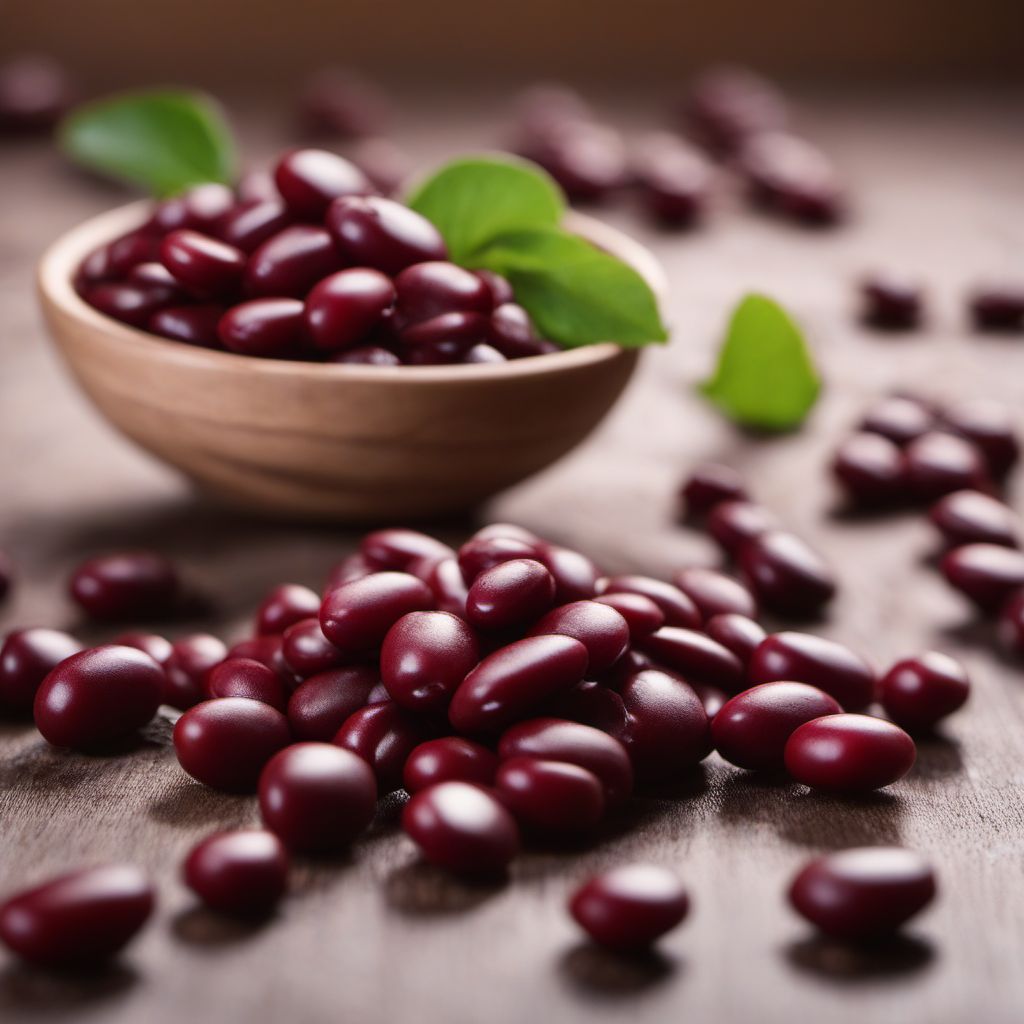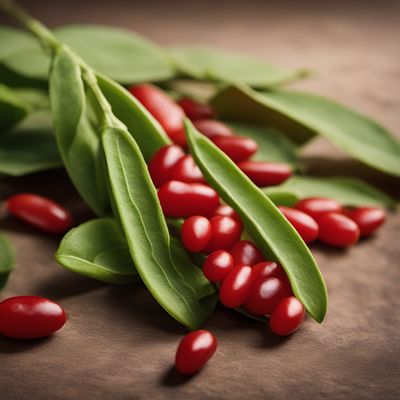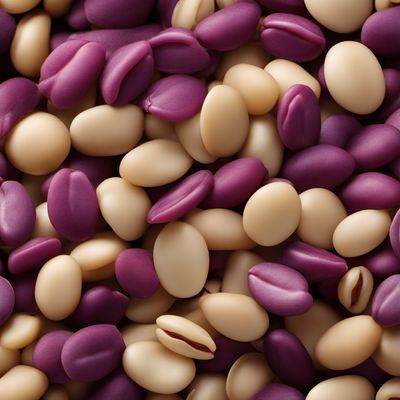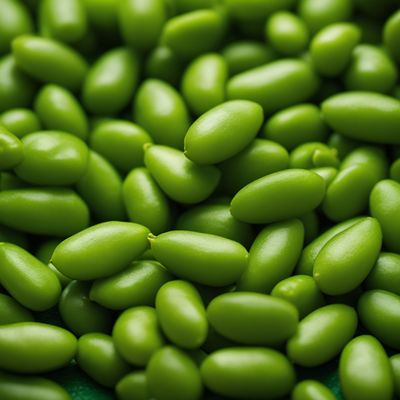
Ingredient
Azuki beans (without pods)
The Versatile Azuki Beans
Azuki beans are small, reddish-brown beans with a slightly sweet and nutty flavor. They have a firm texture that softens when cooked, making them ideal for use in desserts, soups, and stews. These beans are commonly used in Asian cuisines, particularly in Japanese, Chinese, and Korean dishes.
Origins and history
Azuki beans have a long history in Asian cuisines, dating back thousands of years. They are believed to have originated in East Asia and have been cultivated and consumed in countries like China, Japan, and Korea. Azuki beans hold cultural significance in these regions and are often associated with traditional desserts and festive occasions.
Nutritional information
Azuki beans are a good source of plant-based protein, dietary fiber, iron, and potassium. They are also low in fat and cholesterol-free. Additionally, they contain antioxidants that may provide health benefits.
How to select
When purchasing azuki beans, look for ones that are plump, shiny, and uniform in color. Avoid beans that are discolored, shriveled, or have a musty odor. If possible, opt for organic or locally sourced beans for the best quality and flavor.
Storage recommendations
Store dried azuki beans in an airtight container in a cool, dry place, away from moisture and sunlight. They can be stored for up to a year. Once cooked, leftover azuki beans should be refrigerated and consumed within 3-4 days.
How to produce
Azuki beans can be grown in a home garden with proper care. They require well-drained soil, full sun, and regular watering. It takes approximately 90-120 days for the beans to mature and be ready for harvest.
Preparation tips
Before cooking, rinse the dried azuki beans thoroughly and soak them in water overnight. This helps to reduce cooking time and improve digestibility. Azuki beans can be boiled, simmered, or pressure-cooked until tender. They are commonly used in sweet bean pastes, desserts, soups, and stews in Asian cuisines.
Culinary uses
Azuki beans are widely used in Asian desserts, such as sweet bean pastes, mochi, and dorayaki. They are also used in savory dishes like soups, stews, and rice dishes. In Japanese cuisine, azuki beans are a key ingredient in traditional sweets like anmitsu and taiyaki. They can also be sprouted and used in salads or added to grain bowls for added texture and flavor.
Availability
Azuki beans are commonly available in Asian grocery stores and specialty food markets. They are primarily cultivated in East Asian countries like China, Japan, and Korea.
More ingredients from this category » Browse all

Lima beans (without pods)
The Versatile Lima Bean

Rice beans (without pods)
The Versatile Rice Bean

Stink beans (without pods)
The Pungent Delicacy: Stink Beans Unleashed

Runner beans (without pods)
The Vibrant Green Delight: Unveiling the World of Runner Beans

Lablab beans (without pods)
The Protein Powerhouse

Tepary bean (fresh seeds)
The Resilient Legume

Soyabeans (without pods)
The Mighty Bean: Unleashing the Power of Soyabeans

Monantha vetches (without pods)
The Versatile Monantha Vetches

Borlotti or other common beans (without pods)
The Versatile Legume: Borlotti Beans

Ervils (without pods)
Delicate Green Gems

Yardlong beans (without pods)
The Versatile Legume

Jack beans (without pods)
The Versatile Legume: Unveiling the Wonders of Jack Beans